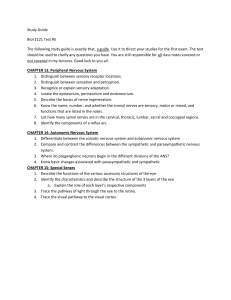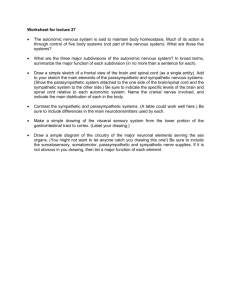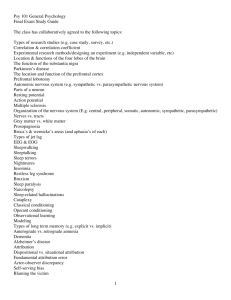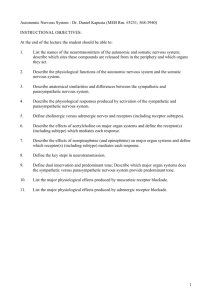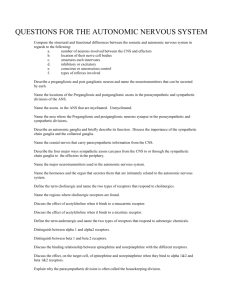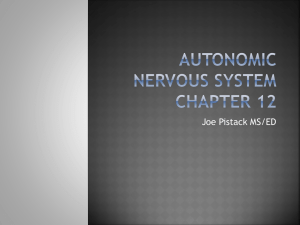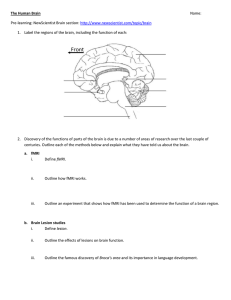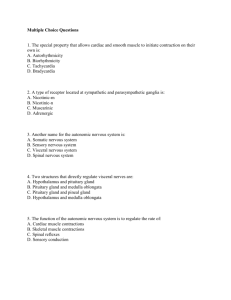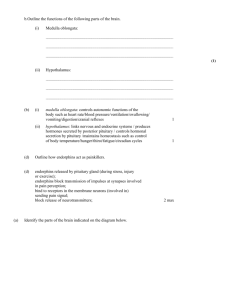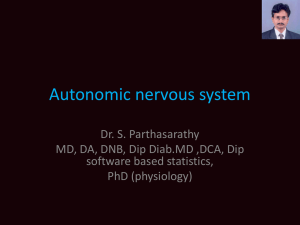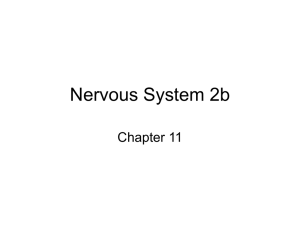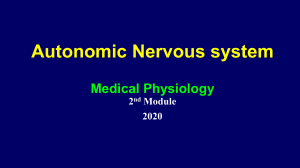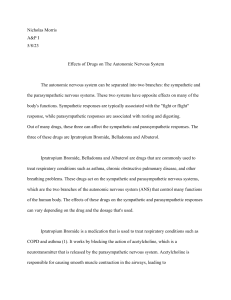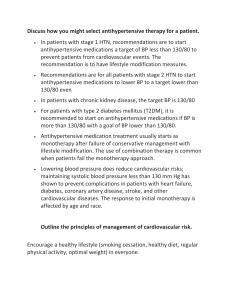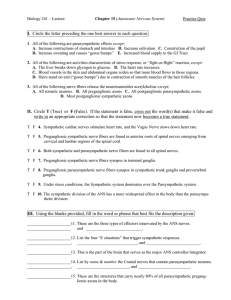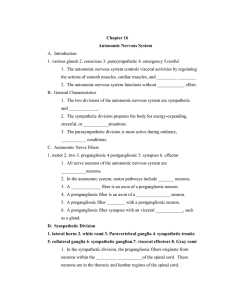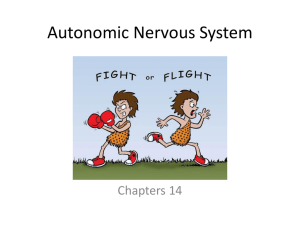Function of the brain
advertisement
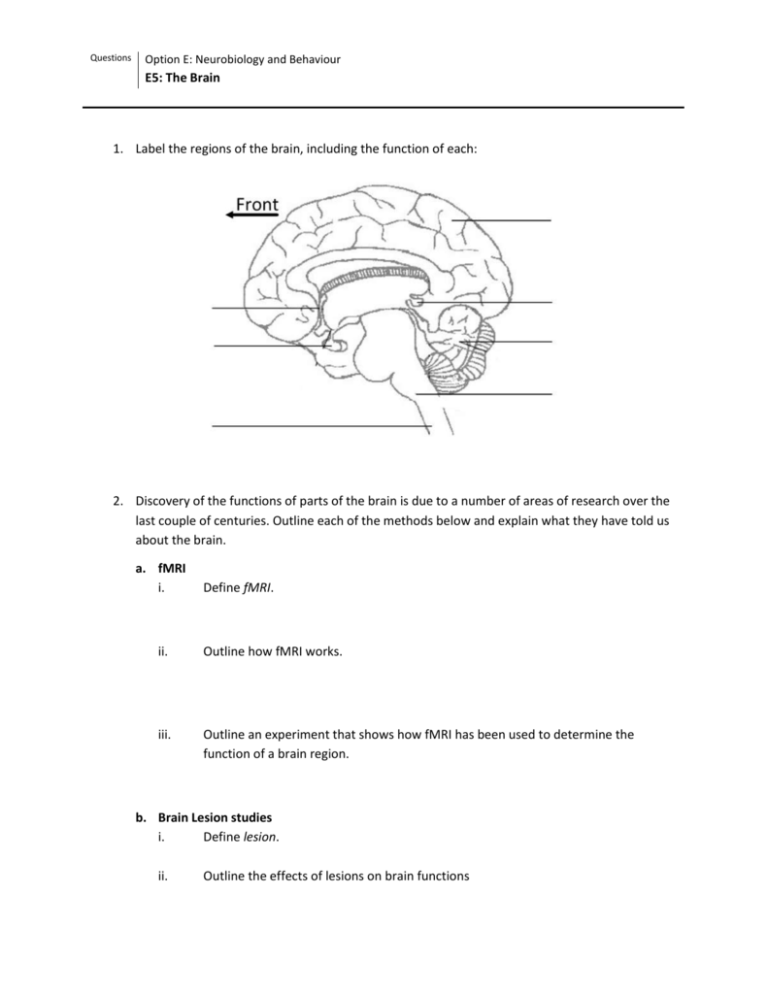
Questions Option E: Neurobiology and Behaviour E5: The Brain 1. Label the regions of the brain, including the function of each: 2. Discovery of the functions of parts of the brain is due to a number of areas of research over the last couple of centuries. Outline each of the methods below and explain what they have told us about the brain. a. fMRI i. Define fMRI. ii. Outline how fMRI works. iii. Outline an experiment that shows how fMRI has been used to determine the function of a brain region. b. Brain Lesion studies i. Define lesion. ii. Outline the effects of lesions on brain functions c. Animal experimentation Outline the following examples of animal experiments into brain function: i. Dissection and comparative anatomy ii. Removal of brain regions (causing lesions), e.g. Flouren’s experiments iii. Electrical stimulation of brain regions, e.g. Ferrier’s experiments The Central Nervous System (CNS) consists of the brain and spinal cord. Peripheral nerves make up the peripheral nervous system, which is divided into the autonomic and somatic systems. 3. Distinguish between the autonomic and somatic nervous systems. 4. The autonomic nervous system is further divided into the sympathetic, parasympathetic and enteric nervous systems. a. Distinguish between the overall functions of the sympathetic and parasympathetic systems. b. The sympathetic and parasympathetic systems can regulate heart rate, blood flow to the gut and control of the iris, among other functions. Complete the table below, outlining these functions: Nerve Pathways Heart Rate Iris Control Blood Flow to gut Sympathetic (fight or flight) Sympathetic nerves Effect Increase in Heart Rate Parasympathetic (rest and digest) Reason Increased supply of oxygen and nutrients to muscles in preparation for action Reason Effect Effect Reason Reason Effect Effect Reason Reason 5. Explain the pupil reflex as a response to bright light: Stimulus: Receptor: Effector muscles: Effect: Effect 6. The pupillary response can be used to determine brain death. a. Distinguish between cardiac and brain death. b. Explain why the pupillary response is a good indicator of brain death, with reference to the functions of the medulla oblongata. c. Discuss the ethical considerations regarding diagnosis of death and of organ donation. 7. Pain is an unpleasant or aversive sensation associated with an action which causes the body harm or trauma. a. What is a function of pain in terms of survival? b. Outline the pain pathway: Stimulus: Receptors: Sensory neurons: Function of the brain: c. Endorphins are protein-based molecules that can block pain impulses. i. State why this might be useful in survival. ii. Explain the effect of endorphins on synaptic transmission in the brain. iii. Suggest a method by which pain-related brain regions can be identified. iv. Suggest reasons why morphine is a highly effective painkiller and can be used in cases of serious injury.

